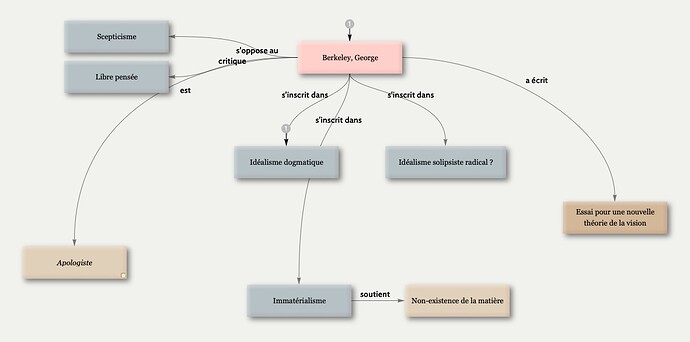Thank you all for your comments.
You are right. My maps are pretty much the same. As I don’t think in English — which is not my native language — as easily as I do in French, I delegate to pictures the task to speak for me.
In fact, I think it is exactly because I tend to be tempted to make a big map that it is difficult for me to see and say precisely what I mean through these two pictures. Desire, for Sartre you refer to, is a « manque d’être », a lack of being, and that’s why I post my question on the forum: for thinking from your suggestions.
I use to write already a lot for research articles and I must admit that in my Tinderbox notes I don’t feel like enlarging myself on what I already know. I often find strange to write down fragments of knowledge I understand relatively well and that I could talk about without any notes. I just want to see connections between concepts and not take time to elaborate fleeting notes, for employing some typical words taken from the Zettelkasten method.
If I make an image, I would say that it is as if I were in the parisian subway. I’m searching for my way and find indispensable to look at a map. Where am I? What do I know about my present situation? And where am I going?
In a subway, every station is in principle connected, directly or not, to others. A subway map gives an overview of the whole. That’s exactly I’m trying to do (but using more pastelized colors than in the parisian metro).
My question is similar to this one: if every piece of knowledge is not necessarily, therefore structurally, linked to every other one, however, what kind of interlinked, “structurally” intertwined knowledge, can I build upon what I already know? (I’m not sure that this question is logically correct.)
And if I build my map as a whole, a map of maps, where does it start? What is the starting point? On this new screenshot, the starting point is an article written by a french lecturer about two deleuzian notions: diagramme and agencement.
I am always surprised to see how Tinderbox suggests such “philosophical” questions. There is something quite wittgensteinian in this questioning about the usage of a digital tool. Isn’t it surprising?
From your suggestion, I think I’m about to create « small scale maps » too with some « unmapped quotations ».



